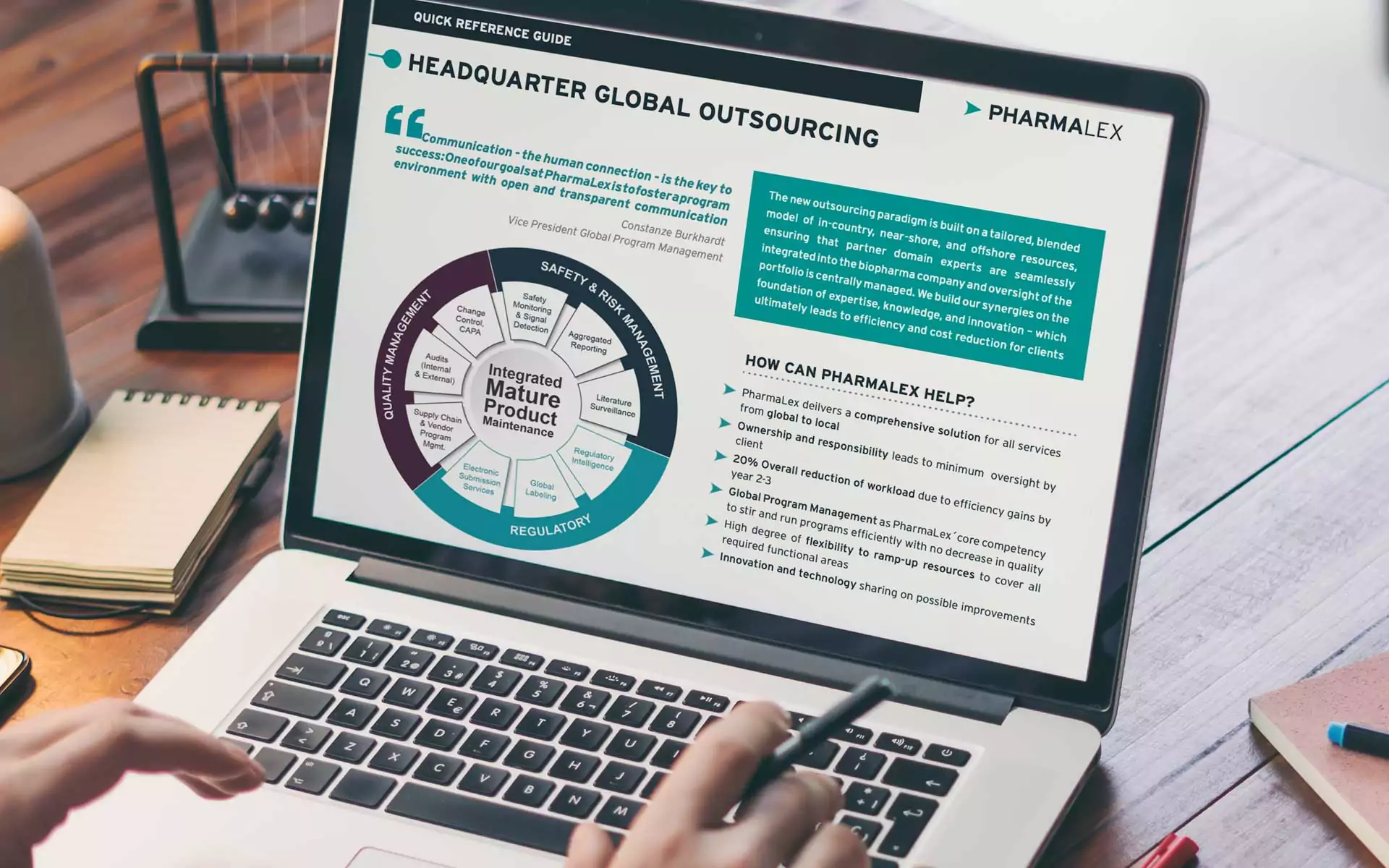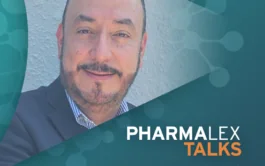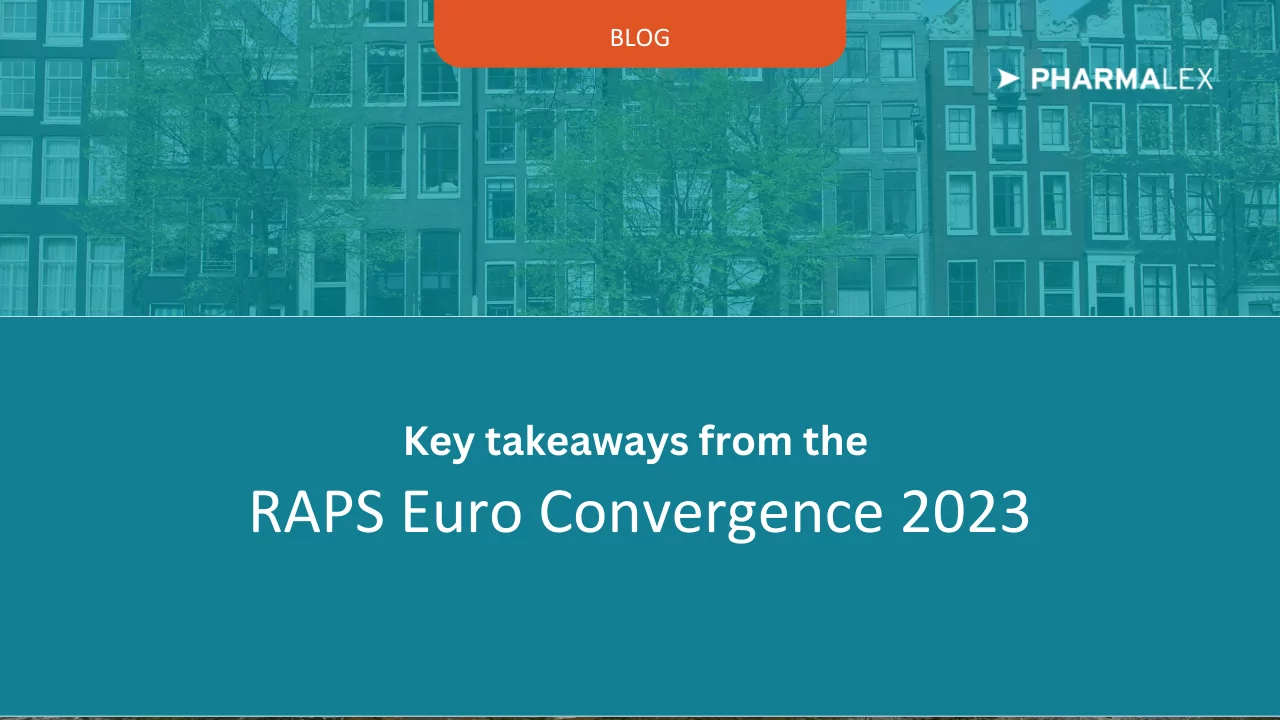The #2023RAPSEuroConvergence brought together experts from the across the European regulatory affairs community to discuss key developments, particularly as they pertain to the medical technology industry.
The conference, which was held in Amsterdam from 10 to 12 May, explored the impact of changing regulatory frameworks and strategy on manufacturers, competent authorities and notified bodies.
Over three days, a packed itinerary offered attendees an opportunity to learn about key changes and developments.
In addition to presenting on the EU In Vitro Diagnostic Regulation regulation’s implications for in-house in vitro devices, drawing on my previous experience working at a notified body, I attended several important and deeply informative sessions given by legislators, notified body representatives and service providers.
Key takeaway 1: The time for manufacturers to act is now!
A panel discussion, MDCG 2022-14: Game-Changer or ‘Shopping List’ for MDR Implementation? moderated by @Sabina Hoekstra van den Boscha, a well-known member of the European Association of Notified Bodies known as #TeamNB, addressed some uncertainties with the Medical Device Regulation (#MDR) implementation. Members of the panel were from the #EUCommission, Competent Authorities and from the #notifiedbodies, all of whom play important roles in the regulation – whether establishing the requirements and timelines, reviewing products to determine whether they meet the regulation or deciding on whether these products will retain their CE marking.
The MDR legislation entered in to force in 2017 with a three-year transition period, which was extended by a year due to the COVID-19 pandemic. Despite the extended period, it soon became clear that manufacturers and legislative infrastructure were not ready for the legislation and the transition period was extended further. Also, recent extensions to the so-called grace period, which follows the transition period, were agreed to in order to avoid massive challenges with regards to device availability on European markets.
While the additional time given has been important for many manufacturers, notified bodies and competent authorities, it has led to much uncertainty, which was evident from audience members during the session. Some manufacturers that had put steps in place to meet the regulation have found that with the release of guidance, they have had to again make changes to their processes and documentation. While the competent authorities and notified bodies understood the frustration of these organizations, they noted during the session that the evolving nature of the MDR meant they could not issue earlier advice.
Nevertheless, as the panelists made clear, the legislation changes are a game-changer and, manufacturers should act now to ensure timely compliance with MDR requirements. They should not wait until the end of the grace periods which for most devices, other than class III implantable custom-made devices, will be either 2027 or 2028.
Key takeaway 2: Manufacturers need support with how to define clinical benefits and measurable outcome parameters.
The MDR requirements to conduct #clinicalevaluations are strict and are often not well-understood by manufacturers. Included in the #benefitrisk evaluation is a requirement for companies to comprehensively define the benefits of their devices. Based on my experience, both as a notified body and in consultancy, it’s evident that many manufacturers struggle to clearly define benefits or describe measurable outcome parameters for their devices. Smaller companies, in particular, rarely have the expertise needed to write the clinical evaluation that complies with the requirements.
The presenters at this session Clinical Evaluation: Measurable Outcome Parameters: Much More Than a Requirement for an MDR-Complaint CER offered clear guidelines to manufacturers on how to create their claims/benefits, what the outcome parameters could be and how to define the acceptance criteria. Based on these criteria, manufacturers would be able to justify the benefit-risk ratio of their device, which is the basis of the clinical evaluation report.
In another session “Clinical assessment: how to minimize the questions from your Notified Body” experts from leading notified bodies, @SheilaWalsh and @AlexeyShiryaev, shared their experience with clinical evaluation reports and the typical issues they see when conducting their clinical evaluation assessment reports #CEARs. The biggest issues notified bodies see are related to the intended purpose and #clinicalbenefit. They are not sufficiently and clearly defined for the devices, which is surprising as they are the basis of the applicable legislation and classification for the device.
There are also often unrealistic expectations when submitting clinical evaluation reports and technical documentation, with many manufacturers ill-prepared for comments from the notified bodies. As the presenters noted, it is common for there to be three evaluation rounds – the first being where the notified body sends back comments and the following rounds being a review of whether those issues have been sufficiently addressed.
The presenters also made clear that the process is not only new for manufacturers but also for the competent authorities and notified bodies, so there needs to be patience from all stakeholders.
Key takeaway 3: AI is here to stay also in medical applications
One highlight of the session Medical Device Software: Top Recurrent Regulatory Deficiencies from Both FDA and Notified Bodies were findings on regulatory deficiencies identified by the notified bodies, including incomplete documentation, lack of validation, inadequate risk management or change control, inadequate complaint handling, and inadequate training. What stood out is that the findings were put together by #ChatGPT and tallied with notified bodies’ own findings.
With so much attention on #artificialinteligence (AI) and other digital innovations, and with devices increasingly likely to take advantage of AI innovations, the discussion was timely and of great interest to the audience.
The presenter @Abtin Ran – an expert in functional safety, software and digitization, and a great speaker – spoke about signal image super resolution methods and the ability of #AI to create super resolution images from a very low-resolution image. For instance, using AI within medical imaging, where acquiring high-resolution images can be challenging, can provide advanced opportunities to create images that contain more specific and detailed medical data.
However, as recent widely held discussions have underscored, there are risks related to AI use, particularly with regards to bias on the source data. As an example, Ran showed a low-resolution image of @BarackObama. While everyone in the audience could instantly identify the former US President, when upscaling the image, the AI failed to create correct image due to the bias within the source data. This is a classic example of how bias in the raw data serious impacts the end result. This kind of bias could lead to false diagnosis in the clinical settings. These are of course considerations that medical device software developers are taking into consideration during design and development.
Insights for manufacturers
Euroconvergence 2023 provided many hugely informative, relevant and thought-provoking sessions, led by experienced presenters and moderators. While the road ahead will not be smooth, the discussions showed much progress has been made. I urge everyone involved in the industry to take advantage of these insightful conferences, which provide important insights for manufacturers especially in an uncertain regulatory landscape.
About the author:
Tiina Riihimäki, Ph.D., is Director, Head of Medical Devices / IVDs, Nordics. Tiina has worked in the medical device and diagnostics industry in quality and regulatory affairs for more than 10 years. She has extensive experience in conformity assessment as a lead auditor and technical/clinical assessor. Additionally, she has been working in the MDCG mirror working group as a Team-NB member.








